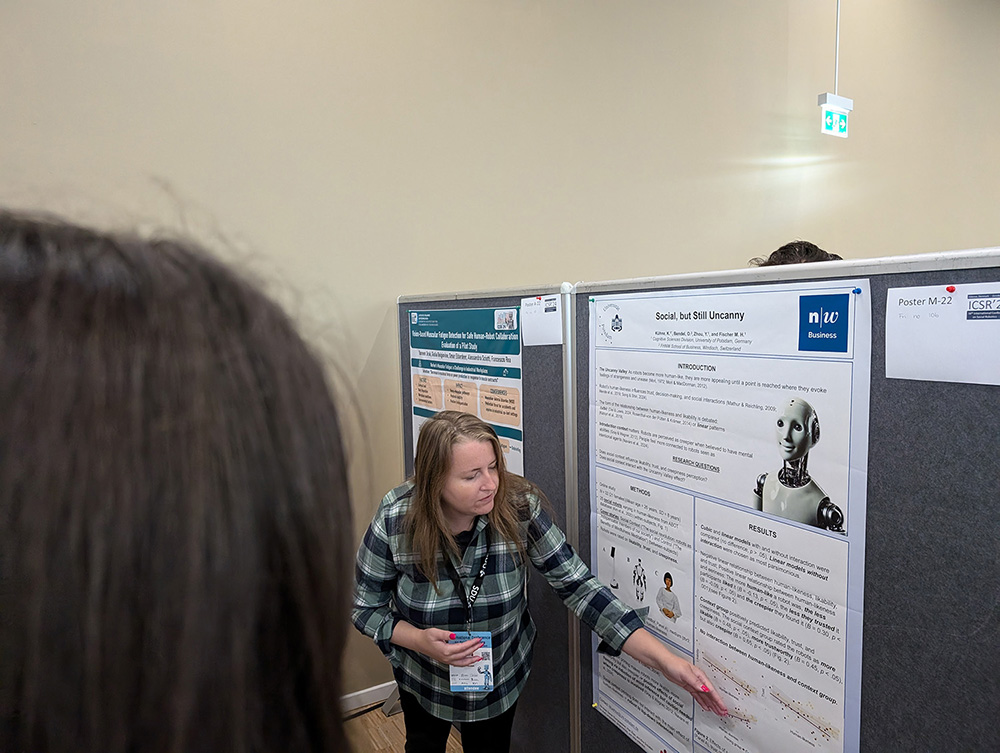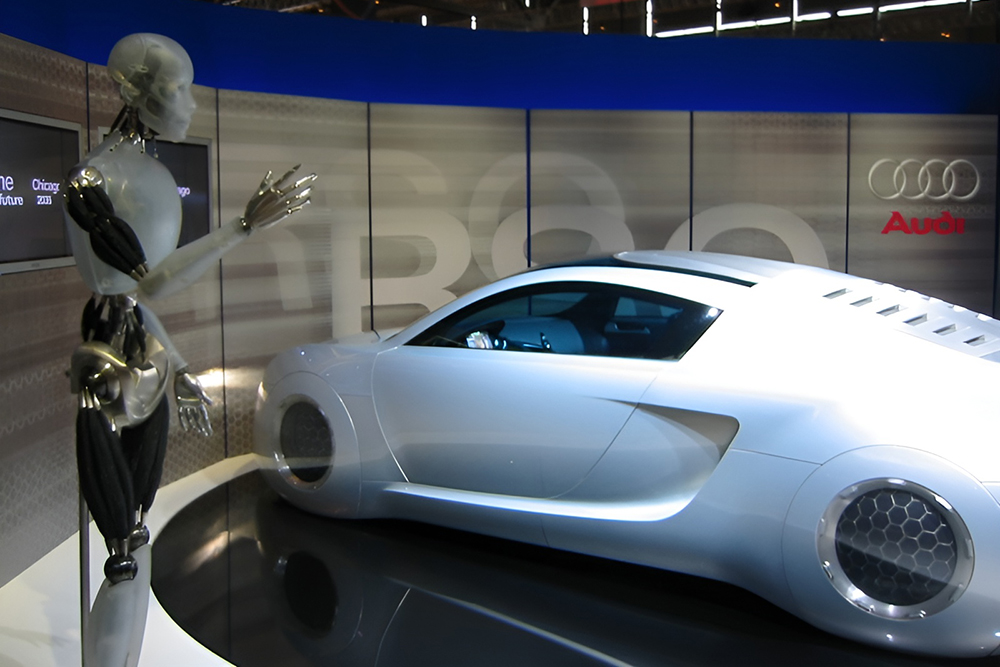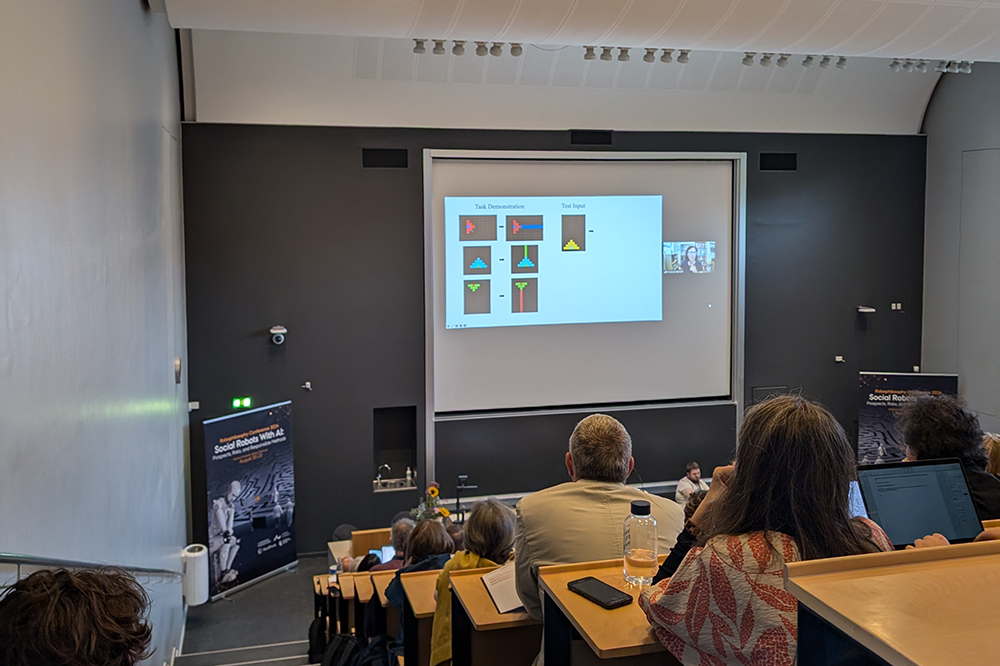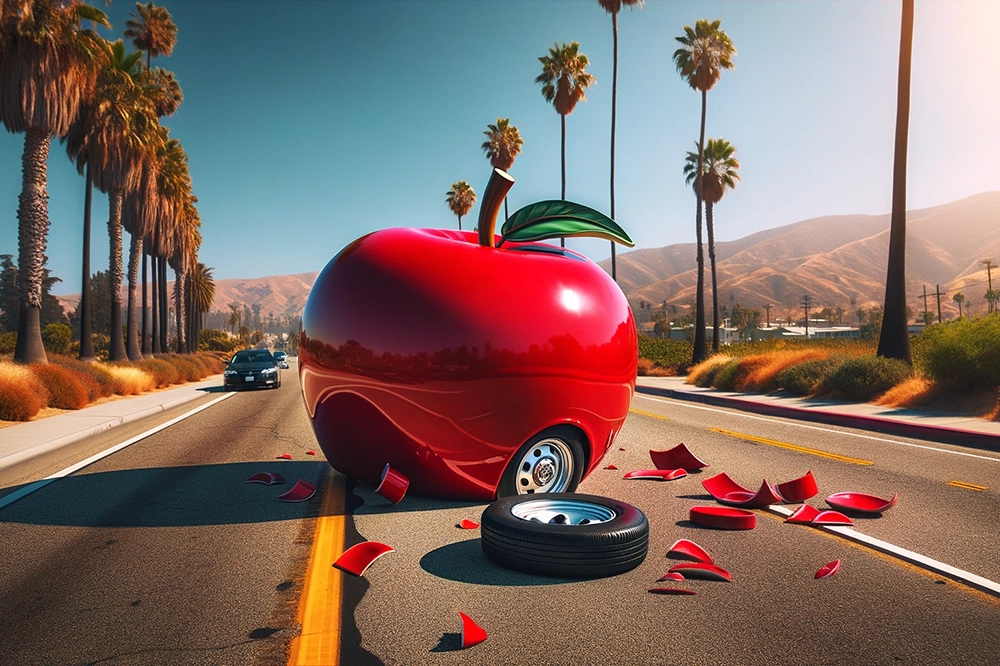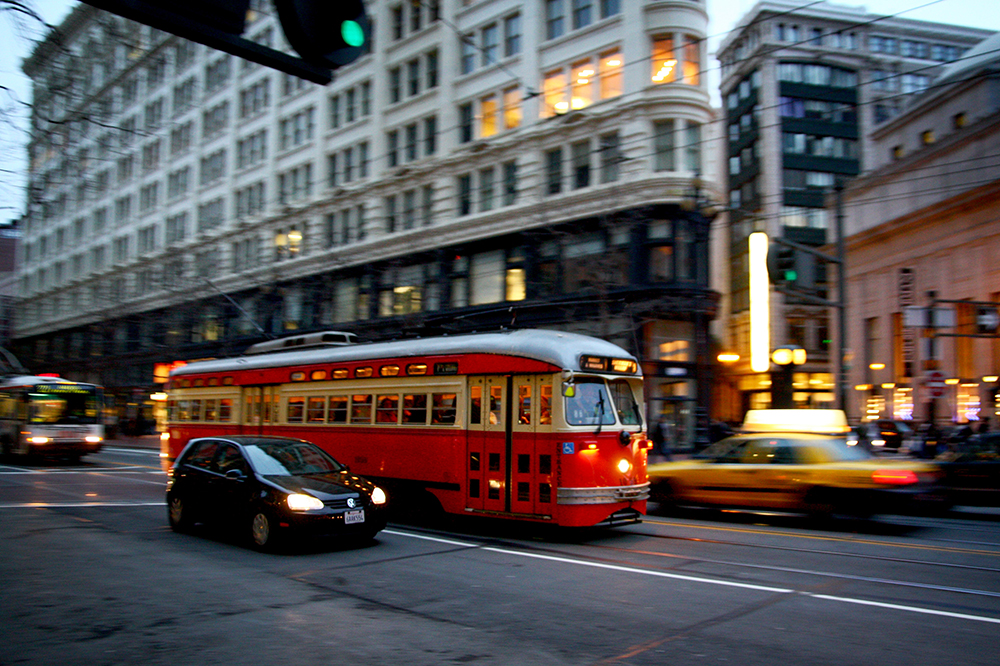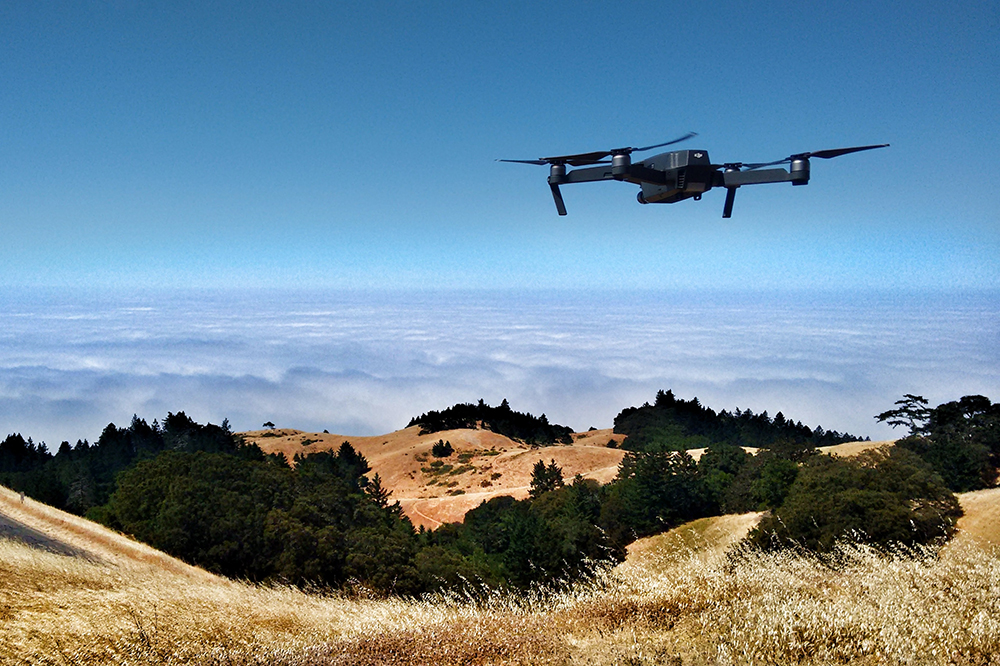The elective module “Social Robots” by Prof. Dr. Oliver Bendel took place from November 4 to 6, 2024 at the Olten Campus. Tamara Siegmann (with the online presentation of the paper “Social and Collaborative Robots in Prison”) was invited as a guest speaker. She made it clear to those present that every member of the university can make a contribution to research. On site were Pepper and NAO from the FHNW Robo Labs as well as Unitree Go2, Alpha Mini, Cozmo, Furby, and Booboo (aka Boo Boo) from Oliver Bendel’s privately funded Social Robots Lab. Unitree Go2 – also called Bao (Chinese for “treasure, darling”) by the lecturer – and Booboo were particularly well received. At the end of the elective module, the students designed social robots – also with the help of generative AI – that they found useful, meaningful or simply attractive. The elective modules have been offered since 2021 and are very popular.
The Uncanny Social Robot
The uncanny valley effect is a famous hypothesis. Whether it can be influenced by context is still unclear. In an online experiment, Katharina Kühne and her co-authors Oliver Bendel, Yuefang Zue, and Martin Fischer found a negative linear relationship between a robot’s human likeness and its likeability and trustworthiness, and a positive linear relationship between a robot’s human likeness and its uncaniness. “Social context priming improved overall likability and trust of robots but did not modulate the Uncanny Valley effect.” (Abstract) Katharina Kühne outlined these conclusions in her presentation “Social, but Still Uncanny” – the title of the paper – at the International Conference on Social Robotics 2024 in Odense, Denmark. Like Yuefang Zue and Martin Fischer, she is a researcher at the University of Potsdam. Oliver Bendel teaches and researches at the FHNW School of Business. Together with Tamara Siegmann, he presented a second paper at the ICSR.
Back to the Future
Elon Musk presented the prototypes of his new Cybercab and his new Robovan in October 2024. In this context, he once again said: “The future should look like the future.” (TechCrunch, 10 October 2024) This is an astonishing statement, because if you know a little about the history of robot and vehicle construction, you know that Elon Musk is orientating himself on ideas that were popular 20 to 80 years ago. Brass, copper, silver, gold, and large, matt or polished surfaces – reminiscent of Elektro (1939) and his animal companion Sparko (1940) as well as futuristic vehicles such as Gil Spear’s Chrysler two-seater (1941). Science fiction and fantasy are also likely to play a role in the design of Tesla and co – think of steampunk and cyberpunk in general, and think of movies like “Metropolis” (1927) and “I, Robot” (2004). Elon Musk generally likes to mix ideas from fiction in his developments, for example the large language model called Grok, which takes its name from “Stranger in a Strange Land” and is intended to fulfil claims formulated in “The Hitchhiker’s Guide to the Galaxy”. TechCrunch also points out the backward-looking nature of the Robovan: “The Robovan has a retro-futuristic look – somewhere between a bus from The Jetsons and a toaster from the 1950s. It features silver metallic sides with black details, and strips of light run-ning parallel to the ground along its sides, with doors that slide out from the middle.” (TechCrunch, 10 October 2024) Robots and robotic vehicles could look very different in the 2020s (Photo: Eirik Newth; cropped by Robophilosophy).
Keynote by Melanie Mitchell
On the third day of Robophilosophy 2024, Melanie Mitchell, Professor at the Santa Fe Institute (USA), gave a keynote speech entitled “AI’s Challenge to Understanding the World”. From the abstract: “I will survey a debate in the artificial intelligence (AI) research community on the extent to which current AI systems can be said to “understand” language and the physical and social situations language encodes. I will describe arguments that have been made for and against such understanding, hypothesize about what humanlike understanding entails, and discuss what methods can be used to fairly evaluate understanding and intelligence in AI systems.” (Website Robophilosophy 2024) In this keynote – as in previous keynotes and presentations – the restrictions of AI and generative AI were emphasized. In response to a question from an audience member, the potential was also acknowledged.
Malicious Attacks Against Autonomous Vehicles
In their paper “Malicious Attacks against Multi-Sensor Fusion in Autonomous Driving”, the authors present the first study on the vulnerability of multi-sensor fusion systems using LiDAR, camera, and radar. “Specifically, we propose a novel attack method that can simultaneously attack all three types of sensing modalities using a single type of adversarial object. The adversarial object can be easily fabricated at low cost, and the proposed attack can be easily performed with high stealthiness and flexibility in practice. Extensive experiments based on a real-world AV testbed show that the proposed attack can continuously hide a target vehicle from the perception system of a victim AV using only two small adversarial objects.” (Abstract) In an article for ICTkommunikation on 6 March 2024, Oliver Bendel presented ten ways in which sensors can be attacked from the outside. On his behalf, M. Hashem Birahjakli investigated further possible attacks on self-driving cars as part of his final thesis in 2020. ‘The results of the work suggest that every 14-year-old girl could disable a self-driving car.’ Boys too, of course, if they have comparable equipment with them (Image: Ideogram).
ICSR + BioMed 2024
In addition to the ICSR in Odense, which focuses on social robotics and artificial intelligence, there is also the ICSR in Naples this year, which organizes a robot competition. In addition, an ICSR conference focusing on biomedicine and the healthcare sector will take place in Singapore from August 16-18, 2024. The website states: “The 16th International Conference on Social Robotics + BioMed (ICSR + BioMed 2024) focuses on interdisciplinary innovation on Bio-inspired, Biomedical, and Surgical Robotics. By fostering the much-needed merging of these disciplines, together with fast emerging Biotech, the conference aims to ensure the lesson learned from these communities blend to unleash the real potential of robots. … The conference will serve as the scientific, technical, and business platform for fostering collaboration, exploration, and advancement in these cutting-edge fields. It will showcase the latest breakthroughs and methodologies, shaping the future of robotics design and applications across several sectors including Biomedical and healthcare.” (Website ICSR) Papers must be submitted by June 5, 2024. Further information on the conference is available at robicon2024.org.
Goodbye Apple Car, Hello GenAI
Apple’s ambitions to enter the automotive business are apparently history. This is reported by Bloomberg. “Apple Inc. is canceling a decadelong effort to build an electric car, according to people with knowledge of the matter, abandoning one of the most ambitious projects in the history of the company.” (Bloomberg, 27 February 2024) Numerous media outlets around the world have picked up the story. The company actually wanted to launch an autonomous electric car on the market. Apple never communicated this publicly, but it was common knowledge. The project as part of the Special Projects Group (SPG) is now to be wound up and the remaining employees are to focus on the area of generative AI in future, where Apple wants to catch up in the coming months. So you could say: goodbye Apple car, hello GenAI.
A Robot Boat to Clean the Rivers
Millions of tons of plastic waste float down polluted urban rivers and industrial waterways and into the world’s oceans every year. According to Microsoft, a Hong Kong-based startup has come up with a solution to help stem these devastating waste flows. “Open Ocean Engineering has developed Clearbot Neo – a sleek AI-enabled robotic boat that autonomously collects tons of floating garbage that otherwise would wash into the Pacific from the territory’s busy harbor.” (Deayton 2023) After a long period of development, its inventors plan to scale up and have fleets of Clearbot Neos cleaning up and protecting waters around the globe. The start-up’s efforts are commendable. However, polluted rivers and harbors are not the only problem. A large proportion of plastic waste comes from the fishing industry. This was proven last year by The Ocean Cleanup project. So there are several places to start: We need to avoid plastic waste. Fishing activities must be reduced. And rivers, lakes and oceans must be cleared of plastic waste (Image: DALL-E 3).
Transport Authority Stops Cruise Robocabs
NBC BAY AREA reported on August 10, 2023: “California regulators on Thursday approved an expansion that will allow two rival robotaxi services to operate throughout San Francisco at all hours, despite safety worries spurred by recurring problems with unexpected stops and other erratic behavior that resulted in unmanned vehicles blocking traffic, including emergency vehicles.” (NBC BAY AREA, 10 August 2023) Oliver Bendel wrote on August 11, 2023 on Robophilosophy: “It is highly likely that accidents will occur, including personal injury. A city is a highly complex environment, and the technology for autonomous driving is far from mature. In addition, the population and tourists are not sufficiently prepared for this form of traffic.” According to several media outlets in late October 2023, Cruise is no longer allowed to send driverless cars on the streets of San Francisco for the time being after two accidents involving pedestrians. In early October, a woman was pinned under a fleet vehicle and dragged for several feet. This type of automated driving is still far from mature.
Autonomously Attacking Drones
On October 17, 2023, Forbes magazine’s senior contributor David Hambling reported a significant advance in Ukraine’s autonomous warfare capacities. Ukrainian developers confirmed their drones, namely Saker Scout, were autonomously striking Russian forces, marking the first acknowledged use of such technology. These drones can identify and target up to 64 types of Russian military objects, remaining operational even in areas of radio jamming. Developed and put into service by Saker, a company initially established for AI applications in small businesses, these quadcopters can carry three kilos of bombs to a 12-kilometre range. Saker’s machine learning-based system is continually evolving and operational updates cater to the detection of new, specific objects or vehicles. Complemented with visual navigation using ground landmarks, the drones can function even without GPS. While the talk of banning ‘killer robot’ type technology continues, there is yet no international agreement. Paul Scharre, Director of Studies at the Centre for a New American Security, aptly said, “The pace of technology far outstrips the pace of diplomacy.” (Forbes, 17 October 2023)

